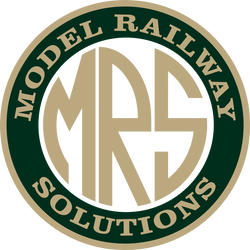N Gauge Locomotives & Rolling Stock
Filters
-
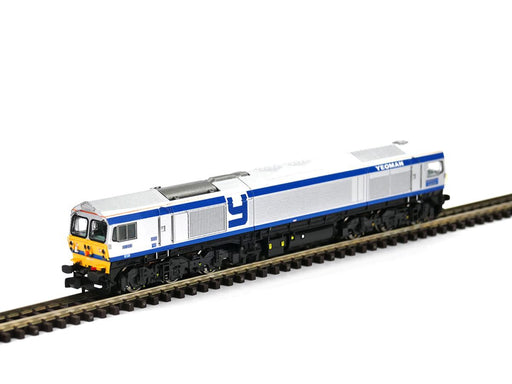 Save £25.81
Save £25.81
Dapol 2D-005-000 Class 59 Painter 59005 Foster Yeoman Silver - N Gauge
DapolOriginal price £172.80Current price £146.99| /The British Rail Class 59 is a type of Co-Co locomotive designed for heavy freight work and was introduced between 1985 and 1995. These locomotive...
View full detailsOriginal price £172.80Current price £146.99| /Save £25.81 -
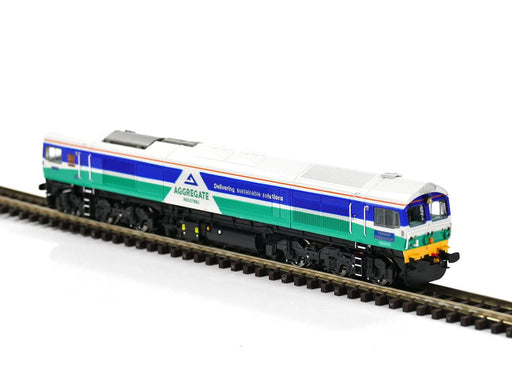 Save £25.81
Save £25.81
Dapol 2D-005-005 Class 59 59001 Aggregate Industries Yeoman Endeavour - N Gauge
DapolOriginal price £172.80Current price £146.99| /The British Rail Class 59 is a type of Co-Co locomotive designed for heavy freight work and was introduced between 1985 and 1995. These locomotives...
View full detailsOriginal price £172.80Current price £146.99| /Save £25.81 -
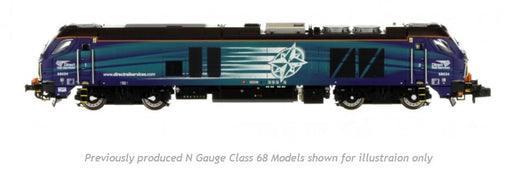 Save £24.01
Save £24.01
Dapol 2D-022-012 Class 68 Fearless 68016 DRS Compass - Locomotive - N gauge
DapolOriginal price £162.00Current price £137.99| /The Class 68 is a type of mainline mixed traffic diesel-electric locomotive manufactured by Stadler Rail (and previously by Vossloh España) for Dir...
View full detailsOriginal price £162.00Current price £137.99| /Save £24.01 -
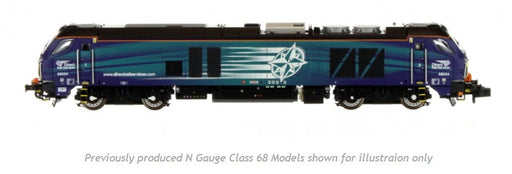 Save £24.01
Save £24.01
Dapol 2D-022-013 Class 68 Vigilant 68018 DRS Compass - Locomotive - N gauge
DapolOriginal price £162.00Current price £137.99| /The Class 68 is a type of mainline mixed traffic diesel-electric locomotive manufactured by Stadler Rail (and previously by Vossloh España) for Di...
View full detailsOriginal price £162.00Current price £137.99| /Save £24.01 -
 Sale
Sale
Dapol 2F-019-003 Blue Spot Fish Van BR Blue SPV E87663 Express Parcels- N Gauge
Dapol£15.95| /Blue Spot Fish Van BR Blue SPV E87663 Express Parcels Picture for illustration purposes - Different number
£15.95| /Sale -
 Sold out
Sold out
Dapol 2F-019-004 Blue Spot Fish Van BR Blue SPV E87505 Express Parcels- N Gauge
Dapol£15.95| /Blue Spot Fish Van BR Blue SPV E87505 Express Parcels
£15.95| /Sold out -
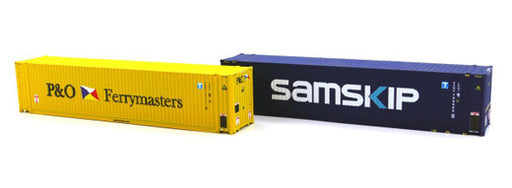 Sale
Sale
Dapol 2F-028-019 45ft High Cube Containers branded P & O FerryMasters & SamSkip Nrs 007303 8 & 798868 0 (Twin Pack) - N Gauge
Dapol£17.85| /The development of containerisation after World War II has led to a huge increase in international trade. This was a direct result of the increased...
View full details£17.85| /Sale -
 Sale
Sale
Dapol 2F-028-210 20FT Culines & Tex Culines, 4 Pack - N Gauge
Dapol£19.75| /Pack of four 1:148 Scale 20' Containers decorated in Culines/TBGU company markings. These models feature a detailed finish and a high level of body...
View full details£19.75| /Sale -
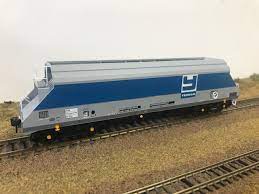 Sale
Sale
Dapol 2F-050-004 O & K JHA (End Hopper) Wagon in Foster Yeoman Livery Nr 19313 Later Livery - N Gauge
Dapol£36.95| /The O & K JHA hoppers were built by Orenstein & Koppel to coincide with the introduction of the Class 59s in the UK for aggregate haulage b...
View full details£36.95| /Sale -
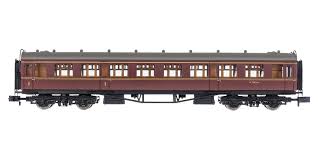 Save £5.00
Save £5.00
Dapol 2P-000-004 Collett Coach BR Maroon Composite W7001W- N Gauge
DapolOriginal price £34.95Current price £29.95| /Charles Collett (1871-1952) succeeded G.J Churchward as Chief Mechanical Engineer of the GWR in 1922. Collett has been accredited more with the im...
View full detailsOriginal price £34.95Current price £29.95| /Save £5.00 -
 Save £5.00
Save £5.00
Dapol 2P-000-035 Collett Coach BR Crimson / Cream Composite W7027 - N Gauge
DapolOriginal price £34.95Current price £29.95| /Charles Collett (1871-1952) succeeded G.J Churchward as Chief Mechanical Engineer of the GWR in 1922. Collett has been accredited more with the im...
View full detailsOriginal price £34.95Current price £29.95| /Save £5.00 -
 Save £5.00
Save £5.00
Dapol 2P-000-053 Collett Coach Chocolate / Cream Shirtbutton Composite 7030 - GWR Roundel - N Gauge
DapolOriginal price £34.95Current price £29.95| /Charles Collett (1871-1952) succeeded G.J Churchward as Chief Mechanical Engineer of the GWR in 1922. Collett has been accredited more with the im...
View full detailsOriginal price £34.95Current price £29.95| /Save £5.00 -
 Save £5.00
Save £5.00
Dapol 2P-000-106 Collett Coach BR Maroon Second W1080W - N Gauge
DapolOriginal price £34.95Current price £29.95| /Charles Collett (1871-1952) succeeded G.J Churchward as Chief Mechanical Engineer of the GWR in 1922. Collett has been accredited more with the im...
View full detailsOriginal price £34.95Current price £29.95| /Save £5.00 -
 Save £5.00
Save £5.00
Dapol 2P-000-107 Collett Coach BR Maroon Second W506W - N Gauge
DapolOriginal price £34.95Current price £29.95| /Charles Collett (1871-1952) succeeded G.J Churchward as Chief Mechanical Engineer of the GWR in 1922. Collett has been accredited more with the im...
View full detailsOriginal price £34.95Current price £29.95| /Save £5.00 -
 Save £5.00
Save £5.00
Dapol 2P-000-204 Collett Coach BR Maroon Brake Composite W6706W - N Gauge
DapolOriginal price £34.95Current price £29.95| /Charles Collett (1871-1952) succeeded G.J Churchward as Chief Mechanical Engineer of the GWR in 1922. Collett has been accredited more with the im...
View full detailsOriginal price £34.95Current price £29.95| /Save £5.00 -
 Save £5.00
Save £5.00
Dapol 2P-000-311 Collett Coach Chocolate / Cream Full Brake Great Western 181 - N Gauge
DapolOriginal price £34.95Current price £29.95| /Charles Collett (1871-1952) succeeded G.J Churchward as Chief Mechanical Engineer of the GWR in 1922. Collett has been accredited more with the im...
View full detailsOriginal price £34.95Current price £29.95| /Save £5.00 -
 Save £5.00
Save £5.00
Dapol 2P-011-077 Gresley BR Maroon 2nd Class Coach E12108E- N Gauge
DapolOriginal price £34.95Current price £29.95| /Sir Nigel Gresley (1876-1941) was one of the most prominent designers of the steam era of British railways. Although his locomotive designs are his...
View full detailsOriginal price £34.95Current price £29.95| /Save £5.00 -
 Save £5.00
Save £5.00
Dapol 2P-011-174 Gresley BR Maroon 1st Class Coach E11035E - N Gauge
DapolOriginal price £34.95Current price £29.95| /Sir Nigel Gresley (1876-1941) was one of the most prominent designers of the steam era of British railways. Although his locomotive designs are his...
View full detailsOriginal price £34.95Current price £29.95| /Save £5.00 -
 Save £5.00
Save £5.00
Dapol 2P-011-210 Gresley LNER Teak Brake Composite 5547 - N Gauge
DapolOriginal price £34.95Current price £29.95| /Sir Nigel Gresley (1876-1941) was one of the most prominent designers of the steam era of British railways. Although his locomotive designs are his...
View full detailsOriginal price £34.95Current price £29.95| /Save £5.00 -
 Sold out
Sold out
Dapol 2P-012-351 Maunsell Coach BR Brake 3rd Class SR Green 4048 - N Gauge
Dapol£14.95| /Maunsell Coach BR Brake 3rd Class SR Green 4048
£14.95| /Sold out -
 Sold out
Sold out
Dapol 2P-012-352 Maunsell Coach BR Brake 3rd Class SR Green 4049 - N Gauge
Dapol£14.95| /Maunsell Coach BR Brake 3rd Class SR Green 4049
£14.95| /Sold out -
 Sale
Sale
Dapol 2P-012-355 Maunsell Coach BR Brake 3rd Class SR Green 3220 - N Gauge
Dapol£19.95| /Maunsell Coach BR Brake 3rd Class SR Green 3220
£19.95| /Sale -
 Sale
Sale
Dapol 2P-012-400 Maunsell BR 3rd Class SR Green 2350 - N Scale
Dapol£19.95| /Beautiful Southern Region coaches each with their own unique running numbers. Complete with gold door handles and window details; these coaches rea...
View full details£19.95| /Sale -
 Sale
Sale
Dapol 2P-012-453 Maunsell BR Composite Coach SR Green 5150 - N Scale
Dapol£19.95| /Beautiful Southern Region coaches each with their own unique running numbers. Complete with gold door handles and window details; these coaches rea...
View full details£19.95| /Sale -
Sale Dapol 2S-002-000D SR Schools Class Named "Repton" Number 30926 in BR Lined Green with Late Crest - N Gauge DCC FITTED
Dapol£149.95| /This is a pre-owned locomotive in "as new" condition complete with original packaging in mint condition hence the competitive price. The Schools C...
View full details£149.95| /Sale -
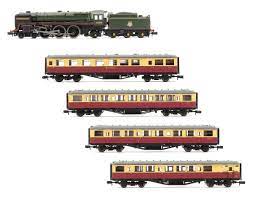 Sale
Sale
Dapol 2S-017-010 Britaania East Anglian Set includes 70039 "Sir Christopher Wren" and 4 x Crimson & Cream Gresley Coaches - N Gauge
Dapol£238.95| /Britannia Pacifics are a type of 4-6-2 locomotive designed by Robert Riddles for use by the nationalised British Railways for mixed freight and pas...
View full details£238.95| /Sale -
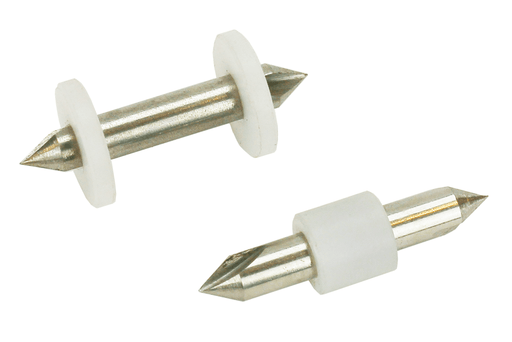 Sale
Sale
DCC Concepts DCF-BR.NN Axle Bearing Reamers, N Scale
DCC Concepts£12.95| /Bearing Reamers (Set of Two) – N These little tools will make a big difference to how many coaches or wagons your loco can pull. – They smooth the...
View full details£12.95| /Sale -
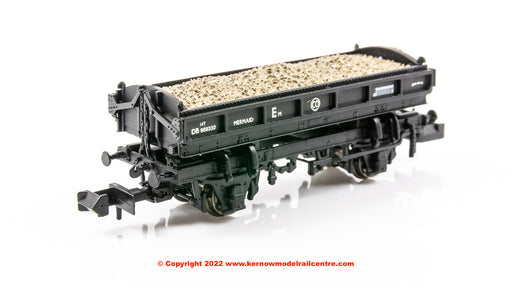 Sale
Sale
EFE E87536 BR 14T Side Tipping Ballast Wagon (Mermaid) Number DB989330 in BR Departmental Black - N Gauge
E.F.E Rail£29.95| /Announced as part of the Bachmann Spring 2022 British Railway Announcements, we are delighted to welcome the return of the EFE Rail 14 Ton ‘Mermaid...
View full details£29.95| /Sale -
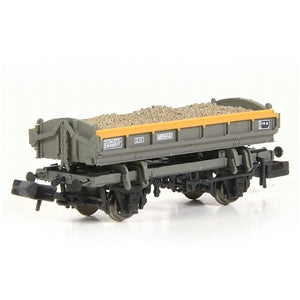 Sale
Sale
EFE E87538 BR 14T Side Tipping Ballast Wagon (Mermaid) Number DB989517 in BR Engineers Grey and Yellow - N Gauge
E.F.E Rail£29.95| /Announced as part of the Bachmann Spring 2022 British Railway Announcements, we are delighted to welcome the return of the EFE Rail 14 Ton ‘Mermaid...
View full details£29.95| /Sale -
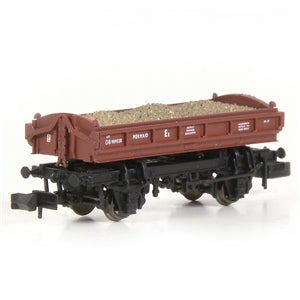 Sale
Sale
EFE E87539 BR 14T Side Tipping Ballast Wagon (Mermaid) Number DB989528 in BR Gulf Red and Yellow - N Gauge
E.F.E Rail£29.95| /Announced as part of our Spring 2022 British Railway Announcements, we are delighted to welcome the return of the EFE Rail 14 Ton ‘Mermaid’ Side Ti...
View full details£29.95| /Sale -
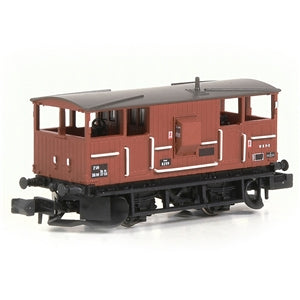 Sale
Sale
EFE E87540 BR Ballast Plough Brake Wagon (Shark) Number D8993755 in BR Bauxite (Late) - N Gauge
E.F.E Rail£32.95| /Announced as part of the Bachmann Spring 2022 British Railway Announcements, we are delighted to welcome the return of the EFE Rail BR 20 Ton ‘Shar...
View full details£32.95| /Sale -
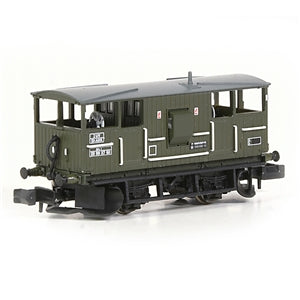 Sale
Sale
EFE E87543 BR Ballast Plough Brake Wagon (Shark) Number DB8993760 in BR Olive Green - N Gauge
E.F.E Rail£32.95| /Announced as part of our the Bachmann Spring 2022 British Railway Announcements, we are delighted to welcome the return of the EFE Rail BR 20 Ton ‘...
View full details£32.95| /Sale -
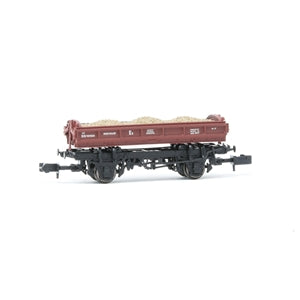 Sale
Sale
EFE Rail E87515 Mermaid 14 Ton Side Tipping Ballast Wagon Number DB989334 in BR Gulf Red Livery - N Gauge
E.F.E Rail£28.95| /MODEL FEATURES: EFE Rail N Scale Era 5 Pristine BR Departmental Gulf Red livery Running No. DB989334 Length 61mm (over couplings)
£28.95| /Sale -
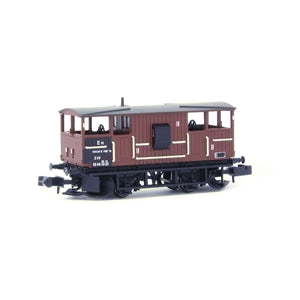 Sale
Sale
EFE Rail E87516 BR 20T Ballast Plough Brake 'Shark' DB993923 BR Bauxite Late, N Gauge
E.F.E Rail£31.95| /EFE Rail BR 20T Ballast Plough Brake "Shark" Wagon DB993923 in BR Bauxite Late livery. MODEL FEATURES: • EFE Rail N scale • Era 7 • Pristine BR Ba...
View full details£31.95| /Sale -
 Sale
Sale
EFE Rail E87519 BR 20T Ballast Plough Brake 'Shark' DB993722 BR Olive Green, N Gauge
E.F.E Rail£31.95| /EFE Rail BR 20T Ballast Plough Brake "Shark" Wagon DB993722 in BR Olive Green livery. MODEL FEATURES:• EFE Rail N scale• Era 7/8• Pristine BR Olive...
View full details£31.95| /Sale -
 Sold out
Sold out
EFE Rail E87524 PBA Tiger TRL 33 70 9382 069 ECC Blue - N Guage
EFE RailOriginal price £44.95Current price £38.99| /New Tooling has been produced to model the PBA ‘Clay Tiger’ Wagons in N scale for the first time, and this EFE Rail model is finished in pristine E...
View full detailsOriginal price £44.95Current price £38.99| /Sold out
